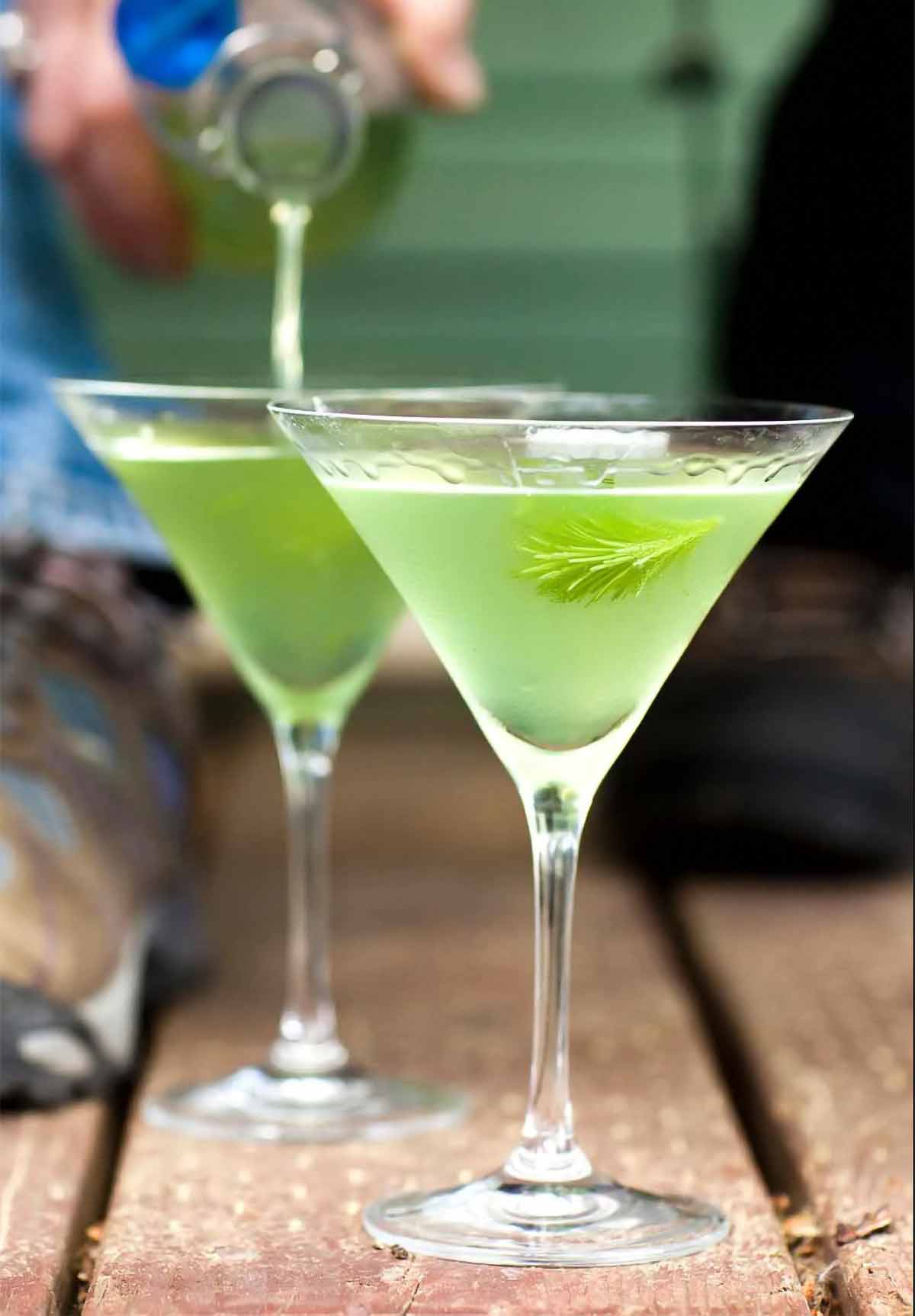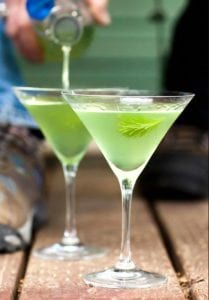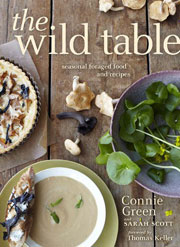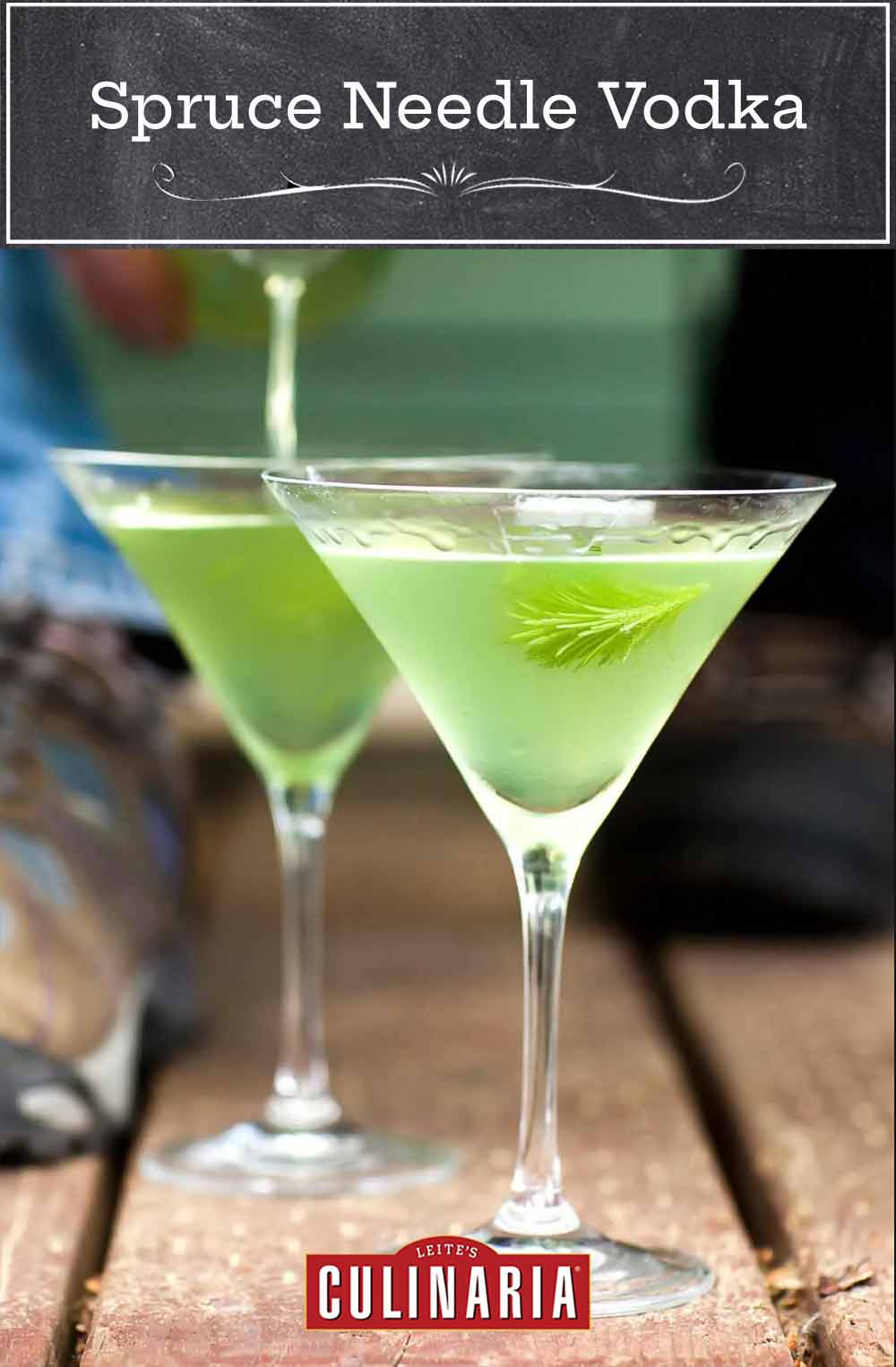
This spruce needle vodka is essentially just vodka infused with Christmas tree. The piney potable draws rave reviews from folks who’ve tried it and will make you want to hum along to “O Tannenbaum” as you knock some back. Simply pour the piney potable into a chilled martini glass and float a fresh, tender tip of your Christmas tree branch atop or bottle it up and gift it to the person who has everything.–Connie Green and Sarah Scott
What’s the difference between spruce, fir, and pine?
While we’re on the topic of tannenbaums, the type of tree you pluck a sprig from will make a profound difference in the final spirit. So as not to go overboard with a resinous smack, stick with spruce or Douglas fir, preferably one from a local tree, rather than pine. And ask whether the tree was sprayed–you want one that wasn’t. Oh, and just to state the obvious, opt for a vodka you wouldn’t mind sipping straight up.

Spruce Needle Vodka
Ingredients
- 1 cup spruce or Douglas fir needles, stripped from the branches
- One (26-ounce) bottle vodka
- Tender tips of the branches, for garnish (optional, but so very festive)
Instructions
- Place the spruce or fir needles and 1/3 of the vodka in a blender. Blend at high speed for 2 minutes. Pour into a large, clean jar or bowl.
- Pour the remaining vodka into the blender jar and swirl it around to gather any green residue on the sides and bottom. Pour this into the needle-infused vodka and stir to combine. Cover the jar or pour the vodka back into its original bottle and seal. Refrigerate for 1 week.
- Strain the vodka mixture, discarding the solid pine mass. Strain the vodka again through a coffee filter or cheesecloth and then pour the vodka into a clean bottle. You can stash the emerald green elixir indefinitely in the freezer. (May be sorta nice to pull it out for a little Christmas in July, eh?)

Nutrition
Nutrition information is automatically calculated, so should only be used as an approximation.
Recipe Testers’ Reviews
Aside from the fact that this vodka is the easiest thing to make (it only took 10 minutes), the taste and smell are wonderful. I love vodka, and this spruce needle vodka was a huge hit at our house. I’ll make sure to always have this on hand.
This spruce needle vodka is wonderful—like the best of both vodka and gin! It’s easy and fun. I’m gifting bottles of this for Christmas!
We love infused spirits, so this spruce needle vodka recipe really intrigued me. I thought it would wind up either amazing or a total bust. Happily, it was really, really great. Aside from the fact that you may not be able to get fir needles yearround, it’s a super easy recipe. A week of steeping in the freezer with bits of our Christmas tree and the vodka was sharp, bracing, and redolent of the great outdoors.
I didn’t make a full batch because I was a little nervous about the outcome, but everyone who tried it was clamoring for more. It made a mean martini, and even mixed well with tonic and lime juice. I may make a few bottles before our tree is gone and keep them in the freezer to have all winter.












I did not totally follow this recipe, but made a tasty infusion – the problem was it turned brown. I started with blue spruce and it infused beautifully and had nice flavor. The next morning the color was starting to go so I took it off the needles and but it through my filter. By time I got home from work it was brown. Does the refrigeration help keep the color? I could see the infusion would take longer than at room temp.
Hi Jill, did you put in the refrigerator after blending?
This looks amazing! Just when I was wondering if I could turn my plant geekiness into some sort of edible, holiday gift (extracts, maybe?), along comes this gem! I’m also curious as to which of the old growth or young growth would taste better.
Personally, young-growth Doug Fir looks really pretty in the spring (it’s a metallic-y blue colour), so maybe that’s reason enough to try the younger stuff.
Finally, something to do with all the Spruce trees in my neck of the woods! Har har har. Pun intended. Thanks, LC!
Am I the only one who thought pine needles were toxic to humans?
kitchenbeard, not all are, by a long shot. But to be completely safe, ask your local authorities about the types of pine trees in your area.